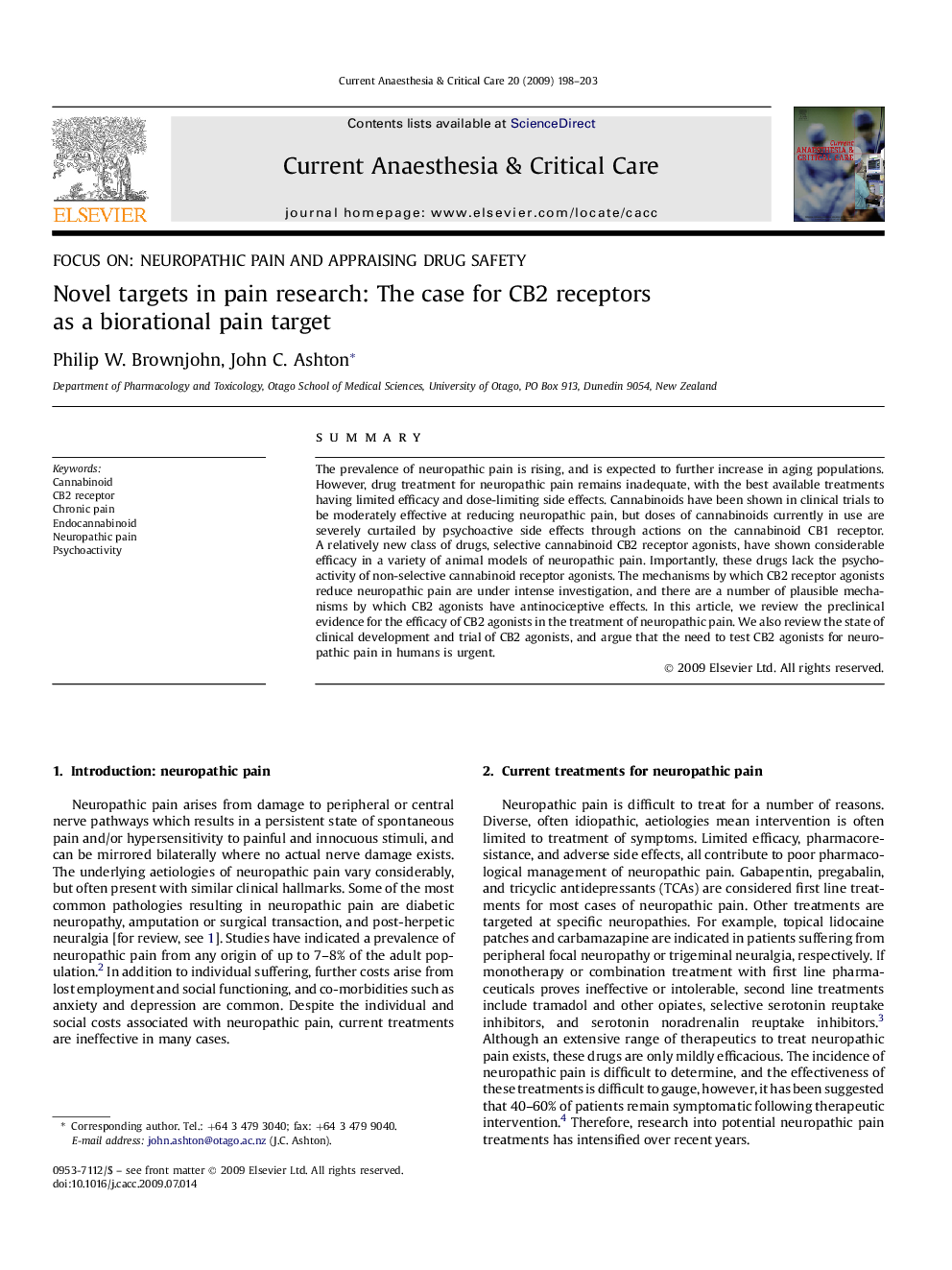| Article ID | Journal | Published Year | Pages | File Type |
|---|---|---|---|---|
| 2607716 | Current Anaesthesia & Critical Care | 2009 | 6 Pages |
Abstract
The prevalence of neuropathic pain is rising, and is expected to further increase in aging populations. However, drug treatment for neuropathic pain remains inadequate, with the best available treatments having limited efficacy and dose-limiting side effects. Cannabinoids have been shown in clinical trials to be moderately effective at reducing neuropathic pain, but doses of cannabinoids currently in use are severely curtailed by psychoactive side effects through actions on the cannabinoid CB1 receptor. AÂ relatively new class of drugs, selective cannabinoid CB2 receptor agonists, have shown considerable efficacy in a variety of animal models of neuropathic pain. Importantly, these drugs lack the psychoactivity of non-selective cannabinoid receptor agonists. The mechanisms by which CB2 receptor agonists reduce neuropathic pain are under intense investigation, and there are a number of plausible mechanisms by which CB2 agonists have antinociceptive effects. In this article, we review the preclinical evidence for the efficacy of CB2 agonists in the treatment of neuropathic pain. We also review the state of clinical development and trial of CB2 agonists, and argue that the need to test CB2 agonists for neuropathic pain in humans is urgent.
Related Topics
Health Sciences
Medicine and Dentistry
Anesthesiology and Pain Medicine
Authors
Philip W. Brownjohn, John C. Ashton,
